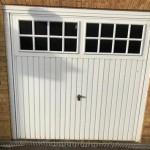Applying Epoxy to a Garage Floor: A Comprehensive Guide
Applying epoxy to a garage floor is a popular method for enhancing its durability, aesthetics, and functionality. Epoxy coatings provide a seamless, resilient surface that resists chemicals, abrasions, and impacts, making it ideal for the demanding environment of a garage. This article outlines the steps involved in applying epoxy to a garage floor, emphasizing the crucial elements for achieving a professional and long-lasting result.
Before embarking on the application process, it is essential to understand the different types of epoxy coatings available. These coatings vary in their chemical composition, application method, and performance characteristics. Understanding the nuances of each type will help in selecting the optimal solution for the specific needs and budget.
Water-based epoxy coatings are generally easier to apply and have lower VOC (volatile organic compound) emissions, making them a more environmentally friendly option. However, they typically offer less durability and chemical resistance compared to other types. Solvent-based epoxy coatings provide excellent durability and chemical resistance but require more stringent safety precautions due to their higher VOC content. They also typically have a stronger odor and require better ventilation during application.
Solid epoxy coatings, also known as 100% solids epoxy, contain no solvents or water, resulting in a very thick and durable coating. They are often preferred for high-traffic or heavy-duty applications. However, their thickness can make them more challenging to apply, and they often require specialized equipment. Furthermore, self-leveling epoxy coatings are designed to create a perfectly smooth and even surface without the need for extensive troweling. These coatings are ideal for floors with minor imperfections or unevenness.
Surface Preparation: The Cornerstone of a Successful Epoxy Application
Surface preparation is arguably the most critical step in the epoxy application process. A properly prepared surface ensures optimal adhesion of the epoxy coating, preventing premature peeling, chipping, or blistering. Neglecting this crucial step can lead to a compromised finish and the need for costly repairs or reapplication.
The first step in surface preparation is to thoroughly clean the garage floor. This involves removing any existing coatings, grease, oil, dirt, and other contaminants. A degreaser specifically designed for concrete surfaces should be used to remove grease and oil stains. Power washing the floor can also be beneficial in removing loose debris and dirt.
Following the initial cleaning, the concrete surface must be profiled to create a slightly rough texture. This texture provides a mechanical bond for the epoxy coating to adhere to. The most common method for profiling concrete is acid etching. This involves applying a diluted solution of muriatic acid to the floor, which opens the pores of the concrete and creates a rough surface.
After acid etching, the floor must be thoroughly rinsed with water to remove all traces of the acid. It is imperative to neutralize the acid residue completely, as any remaining acid can interfere with the epoxy's curing process. A pH test can be conducted to ensure the concrete surface is neutral before proceeding. Alternatively, mechanical grinding can be used to profile the concrete surface. This method involves using a concrete grinder with diamond grinding pads to remove a thin layer of the concrete and create the desired texture. Mechanical grinding offers greater control over the surface profile and is generally considered a more consistent method than acid etching.
Regardless of the method used, it is crucial to thoroughly vacuum the floor after profiling to remove all dust and debris. Any remaining dust can compromise the adhesion of the epoxy coating. Finally, inspect the floor for any cracks or imperfections. Fill any cracks with a concrete patching compound and allow it to dry completely before applying the epoxy.
The Epoxy Application Process: A Step-by-Step Guide
Once the surface preparation is complete, the epoxy application process can begin. This process involves several steps, each requiring careful attention to detail to ensure a smooth and durable finish. Always consult the manufacturer's instructions for specific recommendations regarding mixing ratios, application techniques, and drying times.
The first step is to mix the epoxy components according to the manufacturer's instructions. Epoxy coatings typically consist of two parts: a resin and a hardener. These components must be mixed in the correct proportions to ensure proper curing. Use a mixing drill with a mixing paddle to thoroughly combine the resin and hardener. Be sure to scrape the sides and bottom of the container to ensure all components are fully incorporated.
After mixing, the epoxy should be applied to the floor using a roller or squeegee. Start by applying a thin, even coat of epoxy to the perimeter of the garage floor, using a brush for detail work in corners and along edges. Then, use a roller to apply the epoxy to the remaining floor area. Work in small sections to maintain a wet edge and prevent the epoxy from drying unevenly. Avoid applying the epoxy too thickly, as this can lead to bubbling or sagging.
If using a decorative flake or quartz broadcast system, apply the flakes or quartz immediately after applying the epoxy coating. Broadcast the flakes or quartz evenly over the wet epoxy, ensuring complete coverage. Allow the epoxy to dry completely according to the manufacturer's instructions. Once the epoxy is dry, scrape off any loose flakes or quartz and apply a clear topcoat of epoxy to seal the surface and provide added protection.
Multiple coats of epoxy may be required, depending on the desired thickness and performance characteristics. If applying multiple coats, allow the first coat to dry completely before applying the second coat. Lightly sand the first coat with fine-grit sandpaper to create a better bond for the second coat. Clean the floor thoroughly before applying the second coat.
Curing and Maintenance: Ensuring Longevity of the Epoxy Coating
The curing process is a critical phase that directly affects the final performance and durability of the epoxy coating. It is imperative to strictly adhere to the manufacturer's recommended curing times and environmental conditions to achieve optimal results. Rushing the curing process or exposing the coating to adverse conditions can compromise its strength and longevity.
During the curing process, avoid walking on the epoxy floor or placing any objects on it. Keep the garage door closed to prevent dust and debris from settling on the wet epoxy. Maintaining a consistent temperature and humidity level is also crucial. Extreme temperatures or high humidity can affect the curing rate and the final appearance of the coating.
Once the epoxy has fully cured, regular maintenance is essential to preserve its appearance and durability. Sweep or vacuum the floor regularly to remove dirt and debris. Use a mild detergent and water to clean the floor as needed. Avoid using harsh chemicals or abrasive cleaners, as these can damage the epoxy coating.
Protect the epoxy floor from heavy impacts and sharp objects. Place mats or rugs under heavy equipment or furniture to prevent scratches or dents. Repair any damaged areas promptly to prevent further deterioration. Small chips or cracks can be repaired with a patching compound or a touch-up kit.
Applying epoxy to a garage floor is a multi-step process that requires careful planning, meticulous execution, and diligent maintenance. By following these guidelines and adhering to the manufacturer's instructions, a durable, aesthetically pleasing, and functional garage floor can be created that will provide years of service.

How To Apply Garage Floor Coatings The Diy Guide All Floors

Flooring Garage Cost And Installation Guide Xps

Garage Floor Coat Comprehensive Step By Guide Builds Maz

Diy Garage Floors 5 Simple Steps

Garage Floor Paint Disaster Or 5 Reasons Diy Kits Fail

How To Apply Garage Floor Coatings The Diy Guide All Floors

How To Properly Seal Your Garage Floor Danley S Garages

All You Need To Know About Applying A Garage Floor Clear Coat

Diy Garage Floors

Coatings For Garage Floor Sanding Wood Floors







